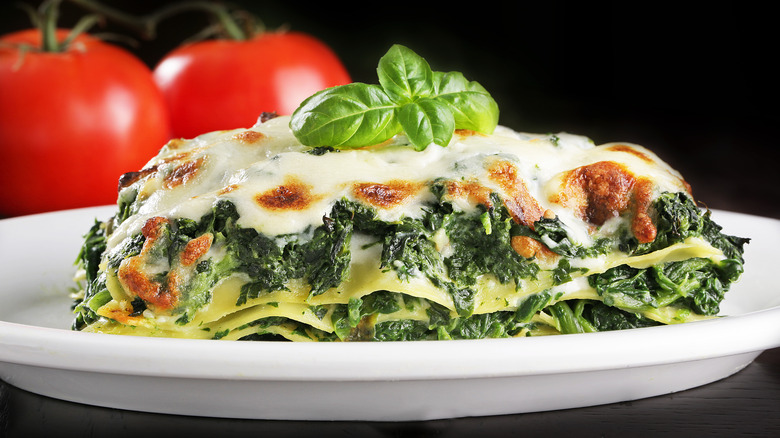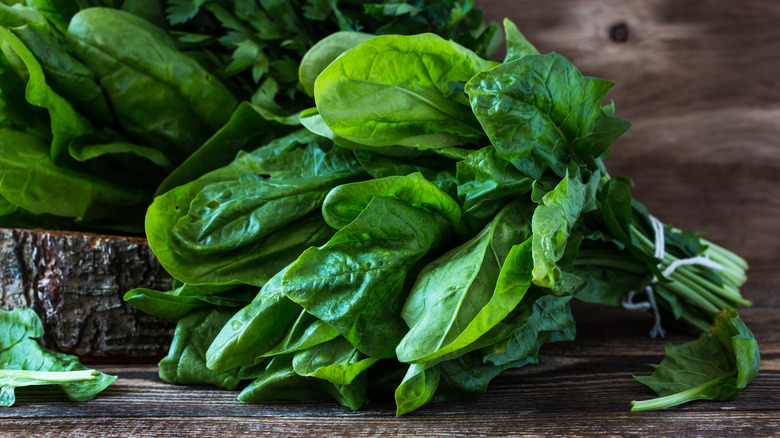The Best Type Of Spinach For Lasagna
Lasagna is a perfect example of something more than the sum of its parts. The Italian classic baked pasta can be served for special occasions, and it's a fantastic centerpiece around which to compose a celebratory feast. The quality of each singular component, the sauce-to-noodle ratio, the crusted corners, and browned top all add up to what is considered the ultimate version. There are many kinds, some made with ricotta and mozzarella cheese to contribute an element of creaminess, while others have a lighter, silkier béchamel sauce.
Although the hallmark recipes include a savory meat ragu made from pork, veal, or beef, a second string of popular and beloved lasagnas forgo meat in favor of vegetables. Eggplant, mushrooms, zucchini, and spinach all share the pride of place in the lasagna pantheon. Another thing they have in common — the casseroles focus on one ingredient, albeit swathed in sauce or cheese. Of these, spinach lasagna may be the most attractive. It's a gloriously emerald and earthy dish with a contrast of colors, textures, and tastes. And when it comes to making lasagna, the type of spinach used can make a difference.
Curly or flat leaf spinach is the best choice
While you may be tempted to go for the ease of frozen spinach to shorten the preparation, you'll end up with a dull-tasting filling. Still, it's not much of a time saver because the thawed spinach needs to be cooked and then thoroughly squeezed to remove any liquid before it can be used (once it's cool enough to handle). Likewise, baby spinach lacks a desirably verdant fullness after it's been baked with a slew of other ingredients. Instead, grab a few fresh bunches of the more assertive savoy (curly) variety or flat mature leaves. They're a sure bet for a pleasant texture and the strong spinach-forward flavor one would expect of this favorite lasagna.
Even more so, the way the greens are cooked affects how the dish holds together as well as its texture. In this case, sautéing is the superior cooking method for coaxing the most flavor from spinach. It softens it while enhancing the taste and allowing the natural moisture to evaporate. Additionally, for a nicely stacked lasagna that won't separate as it's sliced into, it's a good idea to mix the spinach into the cheese layer. Lasagna is such a comforting, hearty, and homey meal, yet it's the details — like the type of spinach you use — that ensure a delicious result.

